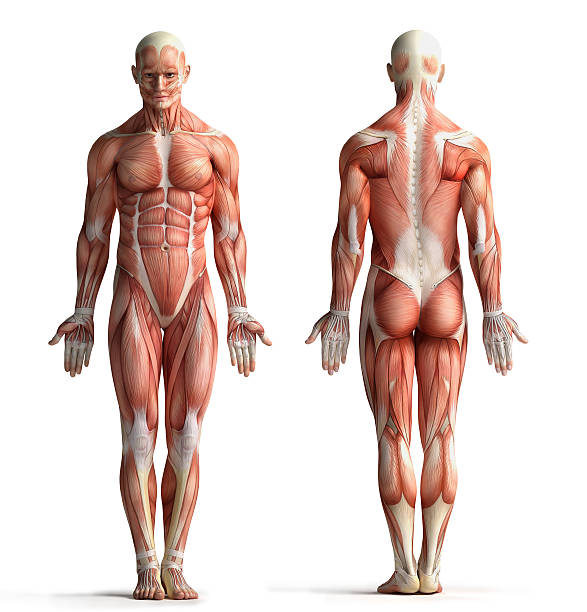Prime numbers have fascinated humanity for millennia. These numbers—integers greater than one that are divisible only by one and themselves—appear at first glance deceptively simple. The sequence begins as 2, 3, 5, 7, 11, 13, 17, 19… and yet, as we probe further, a bewildering pattern emerges: they seem scattered unpredictably, yet their distribution hides profound order. The story of primes is a story of mystery, discovery, obsession, and the limits of human understanding. Every prime number carries with it a whisper of a hidden law, an echo of the infinite structure of mathematics, and a challenge to our intuition about randomness and order.
Unlike the numbers we use every day, which are part of a predictable arithmetic sequence, primes resist simplification. They are not evenly spaced, nor do they form a repeating pattern. Some are separated by mere units, such as 2 and 3, while others lie tens or hundreds apart. Yet, in their distribution, mathematicians have uncovered deep regularities and striking anomalies. The question that drives this fascination is deceptively simple: how random are prime numbers? Can their distribution be predicted, or are they governed by forces we have yet to understand?
A Journey Through History
The fascination with primes stretches back to ancient civilizations. The Greeks, in particular, held them in reverence. Euclid, the great mathematician of classical Greece, proved one of the earliest and most elegant theorems in number theory: there are infinitely many prime numbers. His proof, over two thousand years old, still resonates for its simplicity and brilliance. By assuming a finite number of primes and constructing a number outside that set, Euclid showed that no finite collection can capture them all. The primes are limitless, an unending sequence stretching into the abyss of numbers.
Yet proving their infinitude was only the beginning. Mathematicians across centuries sought to understand their distribution. The gaps between primes, sometimes wide, sometimes narrow, presented a puzzle. The work of Pierre de Fermat and Leonhard Euler in the seventeenth and eighteenth centuries revealed unexpected patterns and tantalizing hints of order. Fermat, with his enigmatic assertions, posed challenges that would take centuries to resolve, while Euler discovered deep connections between prime numbers and infinite series, demonstrating that primes are entwined with the very fabric of mathematics.
As the nineteenth century unfolded, Carl Friedrich Gauss, the prodigy of German mathematics, began to glimpse the contours of prime distribution. Even as a teenager, he suspected that the density of primes diminishes roughly in proportion to the logarithm of the numbers considered. His insights, later formalized as the Prime Number Theorem, offered a statistical view: primes are irregular yet follow a predictable rhythm when viewed from afar. The interplay between apparent chaos and underlying order became a central theme in the study of primes.
Patterns in the Chaos
Prime numbers defy simple intuition. At first glance, they appear scattered almost randomly across the number line. Yet, mathematicians have discovered that this apparent randomness masks subtle patterns. One way to explore these patterns is to look at prime gaps—the differences between successive primes. While small primes often lie close together, large numbers tend to see wider and wider gaps. Even so, no gap is ever completely predictable, and the sequence resists any formulaic regularity.
Despite their erratic appearance, prime numbers conform to remarkable statistical regularities. The Prime Number Theorem predicts that the number of primes less than a given number nn is approximately n/ln(n)n / \ln(n), where ln(n)\ln(n) is the natural logarithm of nn. This theorem captures a sense of order at large scales, suggesting that while the location of individual primes may be unpredictable, their density decreases in a smooth, logarithmic manner. It is a profound insight: within the apparent randomness of primes lies a law of nature, echoing the balance between chaos and order seen elsewhere in mathematics and physics.
Yet deeper mysteries remain. Primes do not follow simple patterns like even or odd numbers, nor do they neatly repeat over intervals. Mathematicians have long sought to uncover hidden regularities. The search for twin primes—pairs of primes separated by only two units, such as 11 and 13 or 17 and 19—illustrates this duality of order and unpredictability. Twin primes appear scattered throughout the number line, suggesting tantalizing structure, but no one has proven whether infinitely many exist. The mystery lingers, a puzzle that entices both amateur enthusiasts and professional mathematicians alike.
Randomness and Predictability
The question of randomness in primes is central to modern number theory. Can prime numbers be modeled as random variables, or do they obey deterministic laws beyond our current understanding? At small scales, primes exhibit irregularity that seems indistinguishable from chance. Yet, as mathematicians analyze them over larger intervals, patterns emerge, revealing constraints and correlations that belie pure randomness.
One of the most striking insights into the “randomness” of primes comes from the connection with the Riemann Hypothesis, a conjecture proposed by Bernhard Riemann in 1859. Riemann suggested that the distribution of prime numbers is intimately connected with the zeros of a complex function known as the Riemann zeta function. The hypothesis posits that all nontrivial zeros lie along a critical line in the complex plane. If true, it would imply a profound regularity in prime distribution, revealing an unseen order within apparent chaos. Despite immense effort and partial progress, the Riemann Hypothesis remains unproven, standing as one of the great unsolved problems of mathematics. Its resolution promises to illuminate whether primes are genuinely random or governed by hidden determinism.
The apparent randomness of primes has practical consequences as well. Modern cryptography, the science of secure communication, relies on the unpredictability of large prime numbers. Encryption schemes like RSA depend on the difficulty of factoring the product of two large primes. Here, the “random” distribution of primes becomes a fortress, protecting digital information in the age of the internet. Yet, mathematicians know that these numbers are not truly random—they are fully deterministic, even if finding or predicting them is computationally arduous. This tension between deterministic laws and apparent randomness is a defining feature of prime numbers.
The Music of Primes
Primes also exhibit a strange, almost musical quality when viewed through the lens of mathematics. The spacing between primes, the distribution of prime gaps, and the patterns revealed through analytic techniques evoke rhythm and harmony. In 1973, Hugh Montgomery and Freeman Dyson discovered a surprising connection between prime gaps and the statistics of energy levels in heavy atomic nuclei. The same mathematical formulas that describe random matrices in physics also appear in the distribution of primes. The revelation suggests that primes are linked to deep universal laws, bridging the abstract world of numbers with the tangible reality of the physical universe.
This connection between primes and physics ignites the imagination. Could prime numbers, these abstract entities, reflect fundamental structures of reality? Are they merely a human construction, or do they hold clues about the hidden geometry of the universe? The allure of primes lies not only in their mathematical mystery but in their suggestion that even the simplest objects—integers greater than one—may encode cosmic secrets.
Computational Frontiers
In the modern era, computers have become indispensable in the study of primes. Massive calculations have revealed primes with millions of digits, explored prime gaps at unprecedented scales, and tested conjectures that were previously beyond reach. Projects like the search for Mersenne primes—primes of the form 2p−12^p – 1—have captured public imagination, blending mathematical theory with cutting-edge technology. The discovery of record-breaking primes often makes headlines, a reminder that the universe of numbers still holds wonders waiting to be uncovered.
Yet even with supercomputers, the deepest mysteries remain elusive. While we can test billions of numbers for primality, predicting where the next prime will appear is another matter entirely. Patterns emerge statistically, but the precise locations of primes resist formulaic prediction. This enduring unpredictability is part of their allure, a reminder that some aspects of mathematics remain mysterious despite centuries of inquiry.
Philosophical Reflections
Prime numbers invite reflection not only on mathematics but on the nature of knowledge itself. They occupy a liminal space between order and chaos, between determinism and randomness. They challenge our intuition and push the boundaries of human understanding. The study of primes forces us to confront the limits of prediction, the subtleties of statistical regularities, and the profound interplay between simple rules and complex outcomes.
Mathematicians and philosophers alike have marveled at the “unreasonable effectiveness” of mathematics, the uncanny ability of abstract concepts to capture real patterns. Primes are a perfect example: integers as simple as 2, 3, 5, 7 conceal structures that connect to physics, cryptography, and even the philosophical notion of infinity. They are at once familiar and alien, predictable in the long run yet endlessly surprising in the details.
Even for the lay observer, primes hold emotional resonance. They evoke wonder at the complexity hidden within simplicity, curiosity about patterns that transcend human invention, and a sense of humility in the face of the infinite. The pursuit of understanding primes becomes a metaphor for the human quest for knowledge itself: a journey filled with discovery, frustration, and awe.
The Future of Prime Mysteries
Despite centuries of study, the puzzle of primes is far from solved. Questions abound: Are there infinitely many twin primes? Can we fully understand the distribution of primes through the Riemann Hypothesis? Are there deeper, yet undiscovered connections linking primes to other areas of mathematics or even to the physical world?
Advances in technology, new mathematical techniques, and fresh theoretical insights continue to push the boundaries. Researchers explore not only the classical questions of prime gaps and density but also primes in higher dimensions, primes in algebraic structures, and primes in relation to quantum phenomena. The frontier of prime research is vast and largely unexplored, a territory where human imagination and logic intersect in extraordinary ways.
Prime numbers remain an enduring symbol of mystery and beauty. They remind us that even the most familiar numbers harbor secrets, that simplicity can conceal infinite complexity, and that human curiosity is boundless. In studying primes, we confront the delicate interplay of order and chaos, the tension between randomness and law, and the profound capacity of the human mind to seek patterns in the infinite.
Conclusion: The Eternal Allure of Primes
The puzzle of prime numbers is a story without an ending, a journey into the unknown realms of mathematics and thought. From Euclid’s proofs to Riemann’s conjectures, from computational discoveries to philosophical reflection, primes continue to captivate and challenge us. They are at once concrete and abstract, simple in definition but infinitely complex in nature.
How random are prime numbers? The answer defies simplicity. At one level, their distribution appears chaotic and unpredictable. At another, deep mathematical laws govern their density and behavior. The tension between apparent randomness and hidden order is the essence of their beauty, a reflection of the infinite complexity embedded in the simplest of concepts.
Primes invite us to explore, to question, and to marvel. They are reminders that even in the most abstract realms, mystery persists, and discovery is eternal. In the endless sequence of integers, primes stand out as beacons of intrigue and inspiration, guiding mathematicians and dreamers alike on a journey toward understanding the profound harmony hidden within the infinite.
Even as new techniques, computers, and insights advance our knowledge, the prime numbers will retain their enigmatic charm. They will continue to challenge, inspire, and evoke awe. Their mystery is a mirror of the universe itself: infinitely rich, deeply ordered yet endlessly surprising, and eternally inviting the human mind to ponder the ungraspable depths of mathematics.






